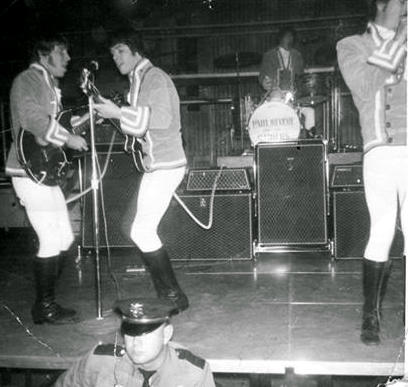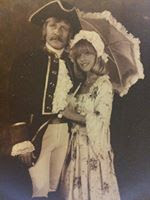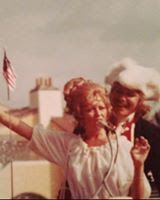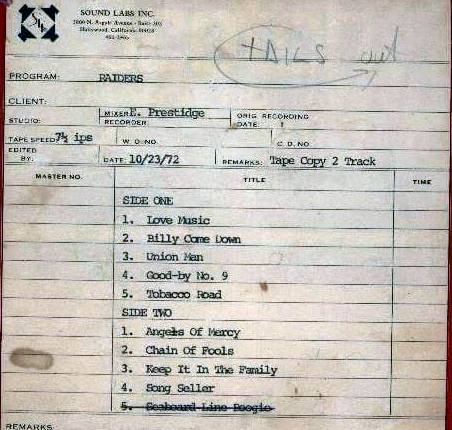Esposito: Rockin’ Like Baseball: The Only Halls of Fame That Make You Think Updated: January 12, 2017
There are over 250 internationally known and recognized Halls of Fame, for all kinds of sports, businesses, industries, arts and services, and yet, it seems there are but two institutions that initiate the greatest controversies, the thickest reams of opinions and response, the most eagerly anticipated elections short of politics, the busiest use of electronic social media, and the most ardent debates for those deserving or not, both prior to and post any annual declaration of inductees. And those two faculties of fame would be the National Baseball Hall of Fame in Cooperstown, and the Rock and Roll Hall of Fame in Cleveland.
No doubt this opinionated thought will inspire its own slew of comments both pro and con, but with the impending announcement of the latest election considering candidates for the celebrated Baseball Hall of Fame nest week, the thought did occur to this observer that other HOFs rarely garner anywhere near the breadth of pre and post levels of fan and media attention.
Without disparaging any hall of fame and its members anywhere, all, no doubt, deserving in their fields, when was the last time you read a newspaper or online column debating the merits of who should next enter the International Bowling Hall of Fame. Everyone bowls, don’t they?
How about the American Game Show Hall of Fame? The National Distance Running Hall of Fame? The World Curling Federation Hall of Fame? The Robot Hall of Fame? The Specialty Food Hall of Fame? The National Midget Auto Racing Hall of Fame? The National Band Association of Distinguished Band Conductors Hall of Fame? (Yeah, that’s a thing. And what if they’re not “distinguished?”)
Even the more A List sports and music halls of fame do not trigger the extent of emotional debates that are attached to the baseball and rock and roll halls.
In just a few weeks, the NFL will announce its latest members to the Pro Football Hall of Fame in Canton, Ohio. And they do a splendid job of celebrating their past, inducting seven newbies each year. Seven. No more, no less. Out of several levels of qualified lists of candidates, it gets whittled down to 15, and a final committee selects the honored seven.
Now maybe there might be a disappointed wide receiver or free safety or an offensive tackle or two that doesn’t make the cut – it’s hard to quantify the stats of some football positions that do not score, other than pro bowl selections or the like – but the point is that you won’t see a gridiron full of columns extolling or questioning its choices. Eventually, most of those 15, if not all, get in. After all, gotta have seven.
And the results rarely are concerned if any honoree may or may not have consumed any PEDs along the way. Exaggeration? Maybe. Maybe not.
This might be shortsighted, but do you recall any controversies surrounding any recent inductions at the Naismith Memorial Basketball Hall of Fame in Springfield, Mass? Can’t think of any, and they induct a bunch every year, too. From a very long list of over 100 candidates in various categories, the list of finalists for enshrinement in this year’s class will be announced during All-Star Weekend on Feb. 18.
But the questions surrounding next week’s announcement for Cooperstown are endless. Should Tim Raines finally deserve a plaque in his tenth and final candidacy. Should the suspicions that Pudge Rodriguez, or Jeff Bagwell, may have used PEDs during their careers keep them from this plateau of immortality. And we’re talking suspicions, people, not hard facts or actual drug test failures. Does the idiotic opinionated rants and vitriolic and socially misguided threats by one Curt Schilling negate any respect of his pitching prowess?
And the big one. Should the impending induction of former Commissioner Bud Selig lift the mental ban off the entire steroid era and give greater credence to the likes of Barry Bonds and Roger Clemens, and recognize their baseball accomplishments despite any associations with PEDs, real or suspected.
On it goes. By this Sunday, every newspaper, most sports magazines and all sports websites will feature columns by those who vote for the Hall of Fame, often checklisting who they have voted for, or not, and why.
And that leads to another level of questioning -whether or not to even cast a ballot.
Our esteemed colleague, Wally Mathews, has already publicly declared he will no longer be voting for the Baseball Hall of Fame, despite his very legitimate credentials for voting with some three decades of being a baseball beat writer on his resume.
Mathews noted as he contemplated this year’s candidates, the process had become “less a pleasure than a chore.”
The very cloudy nature of the entire steroid era and a distasteful incident with a Hall of Fame candidate are also factors, and for the whole story, please read Wally’s column on the subject on his page on this website.
Longtime baseball writer Murray Chass, himself a winner of the J.G. Taylor Spink Award, the Hall of Fame equivalent of a plaque in Cooperstown, chose to turn in a blank ballot as a means of protest.
Apparently, Chass believes the over 600 ballgames that Trevor Hoffman saved were byproducts of happenstance. Or the 1529 runs batted in by Bagwell occurred accidentally. Or that the 2427 games I-Rod played behind the plate, while maintaining a mostly .300-plus average for a 21-year career, combined with 14 All-Star pelts and 13 Gold Gloves were just not worthy of consideration.
For those anxiously concerned that their favorite ballplayers will earn the golden ticket next week may want to check out a site that monitors all of the published ballots cast: www.BBHOFtracker.com
With nearly 200 ballots published, three candidates had exceeded the required 75% minimum for election – “Rock” Raines, Bagwell, and I-ROD, with Vlad Guerrero and The Hoff right on their tail. But before they start enlarging the stage up in Cooperstown for this year’s Induction Ceremony (July 30, by the way, make plans now) know that past tracker results have fallen a little short of the eventual numbers. It does, however, bode well for those at the top of the charts.
Speaking of the top of the charts, let’s get to the other half of this equation – the Rock and Roll Hall of Fame.
Certainly everybody loves music, and everyone has their favorites, both past and present, but the R & R HOF also annually tends to confuse some of their fans with its inclusions and exclusions.
There are over 300 members at their facilities on the lake – bands, individual performers, executives, pioneers, producers, influences, and a very welcomed but previously ignored category – sidemen, and the vast majority have all contributed greatly to the foundation and history of this genre.
The basic criteria are that an artist or group is eligible 25 years after their first recorded release. Great. But it also says: “Besides demonstrating unquestionable musical excellence and talent, inductees will have had a significant impact on the development, evolution, and preservation of rock & roll.”
And there you have it. Rock. Blues. R & B. Soul. Funk. Folk. Country. Metal. They all certainly qualify, rooted in rock or tangents of rock and roll. Not opinion, simply factual. But occasionally, the voting process stretches the boundaries a bit, allowing rap, hip-hop and disco artists into the fold.
When N.W.A. (yeah, I know, not exactly rock and roll) was inducted in 2016, one of their members, Ice Cube, elaborated on the looser criteria: “Rock & roll is not an instrument. Rock & roll is not even a style of music. Rock & Roll is a spirit. It’s been going since the blues, jazz, bebop, soul, R & B, rock & roll, heavy metal, punk rock, and yes, hip-hop. And what connects us all is that spirit. Rock & roll is not conforming to the people who came before you, but creating your own path in music and in life.”
Thank you, Mr. Cube, for that actually very eloquent definition of the essence of rock and roll.
All well and good, and kudos for the explanation, but there would be less whining, that after over 30 years in existence, it would be better justified if the R & R HOF first righted a few oversights before expanding their musical universe.
To earn the eternal gold record, ballots are sent out to over 900 music historians – members of the music industry and every living HOF member – and the top five nominees become that year’s induction class. And something those rockers have included that the Baseball Hall of Fame could take note of and employ – there is an online fan vote. The top five vote recipients from the fans then form one ballot, which is weighted the same as the industry votes, so everyone feels part of the process. Brilliant!
They righted longtime oversights this year by electing the great prog rock group, Yes, ELO, and Journey, all of whom will be officially inducted in ceremonies later this year. The 2017 inductees also include: Joan Baez, Pearl Jam, and Tupac Shakur.
But guess who else and which rock bands are NOT yet members of the R & R HOF?
The Moody Blues! Yes, the band that brought full orchestral arrangements to rock and roll, even more so than when the Beatles – thanks to George Martin, who first hired a string quartet to form the track for Eleanor Rigby – are not in the R & R HOF. Jethro Tull, which turned the flute into a rock and roll instrument with dozens of great songs, also have not yet been named. And how about Al Kooper, who was the keyboard player on Bob Dylan’s “Like a Rolling Stone,” played on dozens of high-profile sessions, led the legendary “Super Sessions” recording, created the perenially popular group, Blood, Sweat & Tears (also not included for pioneering horn sections into rock bands, along with Chicago, inducted last year), producer of bands such as Lynrd Skynrd and others, and the writer of dozens of great rock and roll tunes, still overlooked.
So somehow, Tupac Shakur is a rock and roll hall of famer, while the Moodys, Tull, and Al Kooper are not?
Among the many other deserving bands and rock artists still waiting for the call include (and in no particular order of relevance): Joe Cocker, Ten Years After, Richie Havens, Steppenwolf, The Turtles, Edgar and Johnny Winter, Procol Harum, The Doobie Bros., Todd Rundgren, Bad Company, The Chambers Brothers, Three Dog Night, Grand Funk Railroad, Ry Cooder, Little Feat, The Meters, Billy Preston, Paul Revere & The Raiders, the Tower of Power, Poco, Loggins & Messina, J. J. Cale, Peter, Paul & Mary, Emerson, Lake & Palmer, Harry Nilsson, Robert Palmer, the Guess Who, the Vanilla Fudge, and the Monkees. Yes, the Monkees.
If anyone would like to confirm the credentials of any of these bands and artists, as Casey Stengel used to say, you could look ‘em up.
Which bands or artists would you like to see in the rockers hall? Which ballplayers would you like to see in Cooperstown?

Lyn Christopher - Billy Come Down 12.mp3
Road Home - Keep it in the family.mp3
Paul Revere & The Raiders - Radio Ad.mp3
Hooked On The Radio - Light Strikes, Kicks, Windy.mp3
It was Just Like Paul!


EXPLAINING GROWNUP MUSIC TO KIDS: THE BRITISH INVASION & '60S ROCK
- BY
WEDNESDAY, OCTOBER 21, 2015 | 11 DAYS AGO Adam P. Newton recently became a father for the first time, so he has decided to explain the entirety of post-WWII Western pop music to his new daughter, "Fig"...one genre at a time.
What’s happening, Fig? Ready to dive headlong into a decade that changed the face of rock music? Sure, the artists we discussed a few installments back introduced the world to this curious blend of gospel, blues and country in the ’50s, one that inculcated a fear of teenaged libidos in grownups everywhere, but the artists in this segment cemented that legacy. This happened in large part because a bunch of bands from across the pond (most of whom lived in Great Britain) started making really great music. Known as the “British Invasion,” these groups gleefully imported the sounds of American folk and blues, turned them on their head with great pop lyrics, and then exported this new twist on rock back to its home country. The radio seemingly changed overnight, and there was no Paul Revere warning the colonists — he actually participated this time around!
This isn’t to say that American rock acts folded under the pressure, though many did. Much of the surf-rock that dominated radio in the late ’50s and early ’60s either retreated underground or expanded its vision to compete with the Brits. Other American acts welcomed these new sounds and then pushed rock and blues headlong in new directions. So, while it would be nice to discuss excellent songs like“Walk, Don’t Run” by The Ventures, Jan and Dean’s “Surf City” and the inimitable “Wipe Out” by The Surfaris — not to mention acts like Herman’s Hermits and the GREAT Paul Revere & The Raiders "Hungry" (see?) — I felt it best to focus on acts that truly moved rock forward as a genre.
.
Didn't someone say there was no proof of this LOST ALBUM? Alllllrighty then! This needs to get done. Get it done Markus! And well, well, well. What do we have here? Bonus tracks for the LOST ALBUM! I wonder why Seaboard Line Boogie was scratched off? Oh well. By the way, I did some magic to these pictures to make them clear and readable.
I just read a week ago on a review of the Happy Together Tour about a few things Mark Lindsay said. Check it out right here---->
The first rock group signed by Columbia Records, Lindsay had high expectations. Together with producer Terry Melcher (Doris Day's son), they collaborated on songs. "Columbia wanted us to do three albums a year, but that was difficult with touring," he said. "That was good pressure. Terry and I worked together on music, and I'd write the lyrics. The atmosphere in the studio was so stimulating. I'd rewrite the song while I was there and it would sound better than what I originally wrote."
Dick Clark also noticed the group and hired them to regularly appear on his TV show, "Where the Action Is," which eventually led to Revere and Lindsay hosting another of Clark's TV shows, "Happening '68."
Though the group was quite American, many compared them to the British Invasion bands. "We went to England in the middle and late '60s with the Beach Boys," he said. "The reviews said we were ripping off the Rolling Stones. We had a lot of hit records. We weren't trying to be like anybody."
While the group has endured many musician changes over the years, Revere and Lindsay remained the constant until January 1975 when the two parted ways. "Paul was a wonderful guy but not spontaneous," Lindsay said. "I'm more off the cuff. I began to feel really constricted. He wanted to do the same thing night after night."
Revere formed another group and turned comedic with the help of Rip Taylor, while Lindsay recorded solo and then became a record executive. Lindsay admitted he "got itchy" to return to performing. "I figure I'll perform as long as I can sing and move around," he said. "Right now I'm far from it (retirement)."
Revere, whom Lindsay viewed as a big brother, died in 2014. Lindsay has posted a moving tribute on his official website, where he had said the two were talking about reuniting on stage. "Time ran out," he said. "I recommend people make amends. Do it while you can. Life is so ethereal."
In the meantime, Lindsay is touring and has recorded another CD in response to the successful "Life Out Loud" (2013). He also is working on his autobiography that he's rewritten about four times. "Each time it gets a little bit more gritty and real," he said. "Hopefully, when I get it out again, it will be the last time. I have a CD in the can that we haven't released yet. I may release it with the book. You never know." News - Sentinel.com 8/20/15
I just put up a Mark Lindsay interview from 1985 while he was a part of The Legends For Liberty Tour. The day before the show, they had a press conference at the Hilton downtown in Columbus, Ohio where the tour was starting. I was lucky enough to be living in Columbus at that time. I interviewed Mark twice. In the hotel lobby and also back stage at Veterens Memorial Auditorium where the concert was happening. This interview has NEVER been heard by anyone besides my brother and myself. UNTIL NOW!! None of us are getting any younger so, an early Christmas present to you all from three people. Me, myself and I. Enjoy!

I've been thinking recently about Neil Young's "Homegrown", a record that was recorded in '74-75 but remained unreleased til June 19th of this year.
Paul Revere and the Raiders "The Lost Album", is basically what should have been their final Columbia longplayer (either late 1972 or early 73). It could have been called "Song Seller" or "Love Music" or wtf knows.
There has been all kinds of speculation about these sessions, most are just conjecture (including mine as I was not there-shit I wasn't even alive yet).
Some facts I do know: if you'd like to at least hear a version of "Keep it in the Family", the song was recorded by a group called The Road Home (AND Dunhill 1971- a good record worth finding in the wild). "Billy Come Down" and "Union Man" are completely foreign to me. "Tobacco Road", "Angels of Mercy" and "Chain of Fools" saw the light of day in 1990.
Apparently according to Keith Allison, the version of "Seaboard Line Boogie" is a different take from the one released as a B side of The Raiders' last Columbia single ("All Over You", which i would include on a reissue of this collection for completeness sake). It features beefier guitars and vocals.
Mark also recorded the theme to the western SANTEE called "Jody" in 1973. The film credits "The Raiders featuring Paul Revere and Mark Lindsay" so screw it lets add it here too.
For you 45 hounds, the promo single (mono) mixes of "Powder Blue Mercedes Queen" and "Love Music" are not just edits, but completely different mixes from their regular counterparts, and thus, should be included as well.
So...
That leaves us with the 10 songs originally listed on this 2 track master reel, plus:
1. PBMQ (AM mono single promo mix)
2. Love Music (AM mono single promo mix)
3. (If I Had it to do All Over Again, I'd Do it) All Over You
4. Seaboard Line Boogie (B side mix)
5. Jody
6. Dr. Fine (1971 re recording unreleased because why not!)
Mark
1. What other completed, different songs (originals or covers), were recorded in this time frame, but left unreleased that he can recall
2. What is "Toad Jam Blues", and does it relate to question #1 in any way/shape/form?
3. What would he have chosen to call this album had it been released?
4. Does he have any of these songs buried in his archives? That would not be owned by Sony Music/Columbia
This era of the band is fascinating to me and has basically been overlooked. But the production, arrangements and songs are uniformly strong. Just to be clear I do NOT EVER SEE THIS PROJECT BEING RELEASED. It was not even a thought in my mind, hence why I left that question OUT. I thought the lost album would make for an interesting topic of conversation for both Raiders fans and the general public alike.
